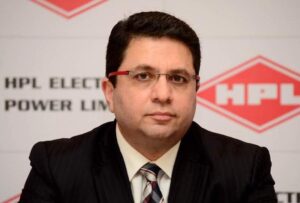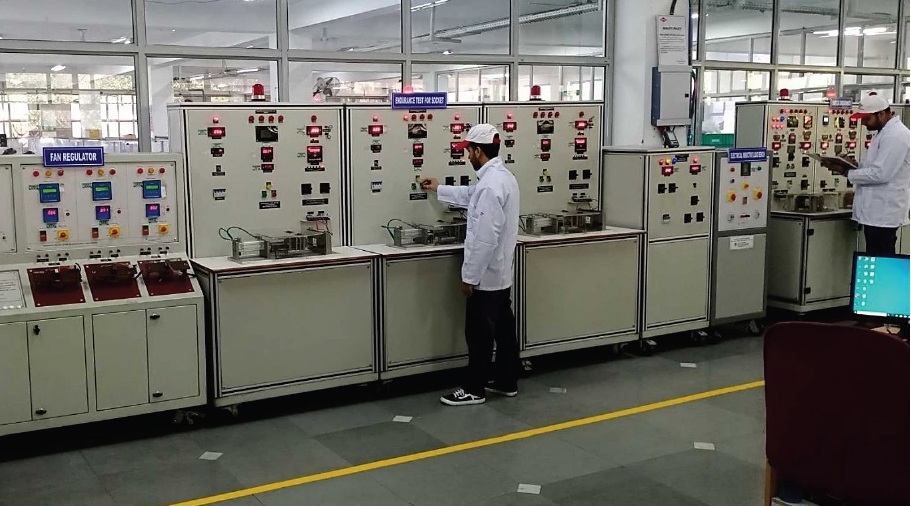HPL Electric & Power Ltd expects that over the next three years, its order book for energy metering will be dominated by smart meters.

Addressing an investor conference, the transcript of which was filed on stock exchanges, Gautam Seth, Joint Managing Director & Chief Financial Officer, HPL Electric & Power Ltd, said that by 2026, the entire order inflow in the company’s energy metering business will come from smart meters.
The Indian government’s plan of rolling out 25 crore smart meters by 2026, under the Revamped Distribution Sector Scheme (RDSS), will be the main business driver, the top official said.
As of July 4, 2023, the outstanding order book position of HPL Electric, across all its business verticals, stood at around Rs.2,100 crore. Out of this, 82 per cent came from the metering business, Gautam Seth said. Within this, 75 per cent (or around Rs.1,300 crore) represented orders for smart meters. Around 30-40 per cent of the current smart meter orders are directed towards Advanced Metering Infrastructure Service Providers (AMISP), Seth explained.
Entry as AMISP
It may be mentioned that very recently HPL Electric & Power won a Rs.417-crore mandate as AMISP for a project promoted by West Bengal State Electricity Distribution Company Ltd and supported by World Bank. This is HPL’s first project as AMISP.
Giving details on this project, Gautam Seth said that this AMISP mandate will see the deployment of around 5 lakh smart meters in Kolkata city. Seth clarified that this project is not part of RDSS but the project has been structured on the same lines. Apart from supply of smart meters, HPL will also be entrusted with setting up the communication network, linking the smart meters to this network, creating and maintaining the IT backbone, etc.
HPL expects that active project implementation will start in January 2024. However, testing of meters and symbolic installation of initial meters will start at the time of “Durga Pooja”, which is in the third week of October 2023. Around 30-40 per cent of the project revenues will accrue in two years, which is when all the smart meters will see field deployment.
Gautam Seth also explained that HPL Electric has the capability of such AMISP projects and has been associated in the past with a leading private utility for a similar project. Before the West Bengal order, HPL has executed such AMISP-like mandates for an aggregate order value of Rs.300 crore.
The RDSS boost
Seth noted that 20-25 entities are currently qualified as AMISPs under the RDSS. Only two of these, including HPL Electric, are smart meter manufacturers per se. HPL Electric, apart from bidding for AMISP mandates under RDSS, will also be supplying smart meters to other AMISPs, Seth said. He added that 30-40 per cent of the total value of a typical AMISP project will go towards equipment (smart meters). This represents are big opportunity space for HPL Electric as RDSS envisages an outlay of around Rs.1.6 trillion, only for smart metering and related services. Gautam Seth also observed that under RDSS, apart from smart meters, HPL Electric will also be supply distribution network-related equipment like switchgear, cables and wires.
Capacity expansion
HPL Electric & Power’s currently meter manufacturing capacity stands at around 1.1 million meters per year, Gautam Seth said. Over the next two years, at least, the company does not envisage any capacity expansion. Thanks to automation and process optimization, which is an ongoing phenomenon at HPL Electric, production volume of smart meters will gradually ramp up, and that too without incurring significant capital expenditure. After two years, however, HPL Electric could consider manufacturing capacity expansion, which is also when the company would like to explore export opportunities. However, for the next 2-3 years, the company would like to concentrate on the huge domestic market opportunity that has opened up thanks to RDSS, Gautam Seth asserted.
Also read: HPL Electric Signs Agreement With WBSEDCL For AMI Project
Featured photograph shows a testing facility of HPL Electric & Power Ltd.



